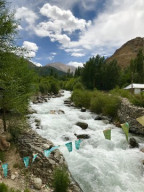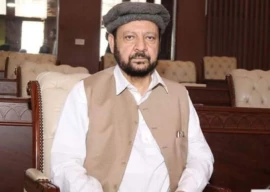
“The pace of construction in Gilgit is at its all-time high and you barely see people ploughing fields and cultivating crops, which used to be the norm a decade back,” said Hassan Khan, a retired bureaucrat from Jutial, which is a major residential town of Gilgit. Residents of Kashrote, Nagral, Khomer, Jutial and Majini Muhalla were self-sufficient in the production of wheat and maize but now they do not have sufficient land to grow the crops, he lamented.
Khan said that agriculture in Gilgit received a major blow in the 1990s when over 10 kanals of “the most fertile” land was acquired by the government to set up an airstrip. However, the project was later shelved and a public park was established in its place. Other agricultural lands were converted into markets and housing schemes, he added.
Gilgit-Baltistan (G-B) Water and Power Minister Wazir Shakeel said there are over 150,700 power consumers in the seven districts of G-B and approximately 400 new connections are issued every day. “If nothing else, these figures alone speak of the fast pace of construction in G-B,” he added.
Nafees Ahmed, an agriculturist, fears that Gilgit will lose all its agricultural land if the pace of urbanisation was not slowed down. “Around 98 per cent land in G-B is mountainous and residents should capitalise on the little cultivable land they have,” he added.
When contacted, G-B Finance Minister Mohammad Ali Akhtar said the government is working on giving impetus to the agriculture sector since 80 per cent people across the region are still associated with the sector in one way other the other.
He said that Rs120 million have been allocated for G-B’s agriculture sector in the current budget, adding that the government is hopeful that the sector will thrive once again.
Published in The Express Tribune, October 1st, 2012.




1732745394-0/Diddy-(4)1732745394-0-165x106.webp)



1730886375-0/Untitled-design-(46)1730886375-0-270x192.webp)








COMMENTS
Comments are moderated and generally will be posted if they are on-topic and not abusive.
For more information, please see our Comments FAQ